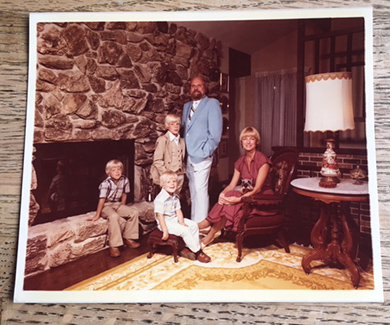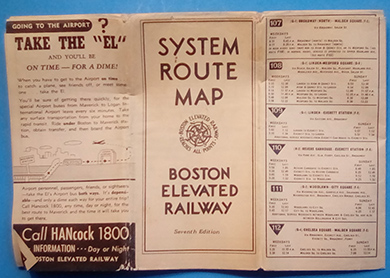 |
|
|||
 |
 |
|||
RINKER ON COLLECTIBLES — Column #1745 Copyright © Harry Rinker, LLC 2020 Questions
and Answers
QUESTION: Many years ago, my wife and I received a 36-inch high, painted, wooden statue of an African-American man that her parents had purchased at a 1970s auction. The statue is carved from a single piece of wood. The man is wearing a cap and uniform that includes a tie. An arrow-like crest is on the left pocket of his jacket. The legs and feet are elongated and the body foreshortened. There is a box/suitcase between his feet. The man is holding a round wooden tray with a cylinder under his right arm. He has two divided boxes (one on his left and one on his right) attached to the bottom of his arms. A music box that plays “Camptown Races” is housed in his back. When the music box plays, the man’s head moves back and forth to the rhythm of the song. I have tried to research this statue but with no success. I would appreciate any help you can provide. – RG, Bellwood, PA, Email Question 
ANSWER: Your statue raises so many questions it is difficult to know where to begin. First, what is the occupation of the figure? At first glance, the gentleman appears to be a Pullam or railroad porter. His uniform is elegant, suggesting the possibility of hotel or private club porter or waiter. Second, what purpose did the statue serve? If it was a cigar store figurine, it most likely would not have had a music box and tilting head mechanism. It probably was a trade stimulator found inside a tobacco shop or similar type of business. Third, who made it? It is too accomplished to have been made by an untrained wood carver. The quality and detail of the work suggest a person with training and experience. If true, the carver must have made other figurines. When I did my research, I did not find any that came close to the one you own. I hesitate to assign a one-of-a-kind designation to anything based on my belief that if there is one, there is another. I just have not looked in the correct place to find it. Fourth, when was the statue made? Starting with the information you provided, it has to be before the 1970s. 1900 to 1920 is too early. I favor sometime in the 1920s or 1930s, albeit it could date from the late 1940s or early 1950s. Fifth, what is the correct secondary market for the statue? The statue has one foot in the regular antiques and collectibles marketplace and a second in the folk art sector of the market. Since folk art collectors view cigar store figurines as within the coverage of their category, the statue has folk art appeal. Because the statue has pizzazz or WOW! value, it is a prime candidate for the conversation/decorator market. Likewise, the statue has strong appeal to collectors of African-American memorabilia. To paraphrase a Marlon Brando quote, “you have a contender.” The value of your statue is market driven with wide variances in value depending on the market. In a small market, such as the one near where you live, the statue has a value between $250.00 and $300.00. Double that in a large metropolitan market with a strong African American community. In the folk art secondary market, the statue’s value would easily exceed $750.00 and more likely top $1,000.00. If you plan to insure it under a home insurance fine arts rider, I recommend a value between $1,250.00 and $1,500.00. If you decide to sell it, I recommend approaching several large folk art or national auction galleries, such as Heritage in Dallas, Texas. You also might consider a private treaty sale to a major African-American or Folk Art Museum. Should you decide to donate it to a museum, please contact me for recommendations. QUESTION: I have been searching for several years in an effort to locate the persons or repository that owns the surviving negatives from the commercial unit of Moffett Studios in Chicago, Illinois. My goal is to obtain the negative of my family picture taken in Kalamazoo, Michigan, in 1978. The original 36-inch x 46-inch photograph has faded so that facial figures are not recognizable, even though the image was marketed as an “heirloom” photograph. The number on the back of the photograph is 78-2360. I am almost 81 years old and want to make a new print for each of my three children. Can you help me remove this task from my bucket list? – MVB, Kalamazoo, MI, Email Questionm 
ANSWER: Just prior to my parents marrying 1931, they had head and shoulder portraits taken by Ralph Metzger, a photographer in Allentown, Pennsylvania. The studio closed in 1986. Around that time or shortly thereafter, I contacted Metzger to see if the negatives survived. They did. I ordered several additional 8-inch by 10-inch prints, sending one to each of my children. I pleaded, begged to buy the negative. The answer was a simple “no.” I have no idea what happened to the negative. My guess is that it was discarded. Institutions, non-profit or otherwise, have little interest in saving thousands of family portrait images from local photographs. Negative collections consume a great deal of space and have little research value. Institutions will save a photographer’s logbook so they can identify individuals should pictures with identification numbers on the back be donated to them. Since you already know who the individuals ae in your photography, a Moffett negative identification book is of no value to you. My advice in terms of trying to find the period negative for your image is “give up.” It is not going to happen. Even if you do find the negative, there is no guarantee it is usable. Color negatives deteriorate and fade over time. There are steps you can take to have the existing image enhanced and restored. An internet “restoring old color photograph” search revealed dozens of websites for photography studios offering this service. Most use Adobe Photoshop software. Before selecting a firm, comparison shop (get several quotes) and carefully check qualifications. Insist that the firm provide a digital file of the corrected image. Also, consider contacting an art museum with a photographic collection and asking for a recommendation of what professional service it uses. For the highest quality work, contact the American Institute for Conservation (www.culturalheritage.org.). QUESTION: I have a copy of the “System Route Map of the Boston Elevated Railway, Seventh Edition.” It contains a foldout map. The fare at the time was a dime. It appears to date from the late 1930s or early 1940s. Is it worth anything to a “good home?” – SD, Lansdale, PA, Email Question 
ANSWER: The Massachusetts Bay Transportation Authority (MBTA), memorialized in Peter, Paul, and Mary’s ”M.T.A.”(then the Metropolitan Transit Authority), traces its origins back to a family-owned ferry around 1630. In1901, the Main-Line Elevated opened, the precursor to the Orange line. Until the Silver Line was extended to Logan Airport, passengers used the Blue Line, which passed under Boston Harbor, to reach the airport. Although there are subway/elevated collectors, their focus is primarily on local lines in their area. A Chicago or New York collector of elevated railway memorabilia has zero to minimal interest in material from other areas. Collector interest also is minimal in multiple edition material. It would not require more than one hand to count the number of Boston elevated/subway collectors who are committed to assembling a full run of Boston route brochures. The value of the Boston route brochure in the greater Boston area is between $3.00 and $5.00. Matted, framed, and marketed as a decorative wall hanging, its value jumps into the $35.00 to $45.00 dollar range. The framed brochure will make a great conversation piece hung on the wall in an office or home located along the route. Harry L. Rinker welcomes questions from readers about
collectibles, those mass-produced items from the twentieth and twenty-first centuries.
Selected letters will be answered in this column.
Harry cannot provide personal answers.
Photos and other material submitted cannot be
returned.
Send your questions to: Rinker on Collectibles, 5955 Mill
Point Court SE, Kentwood, MI 49512.
You also can e-mail your questions to
harrylrinker@aol.com.
Only e-mails containing a full name and mailing address
will be considered.
|
||||